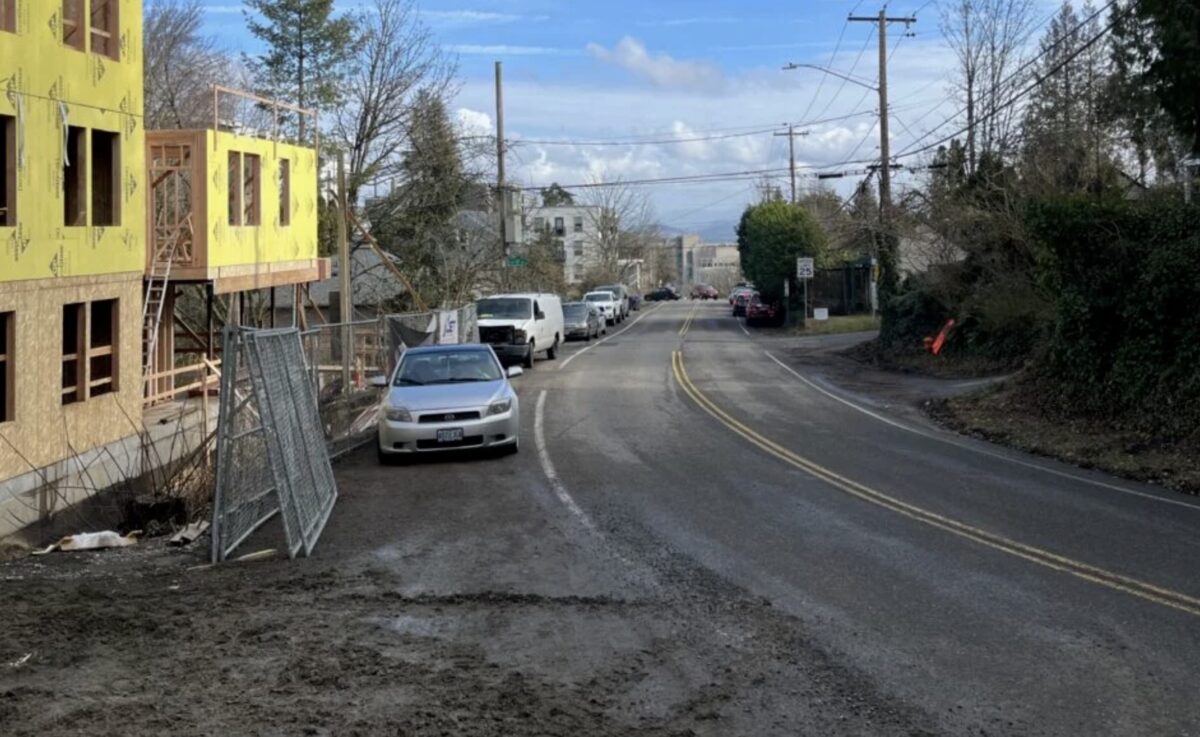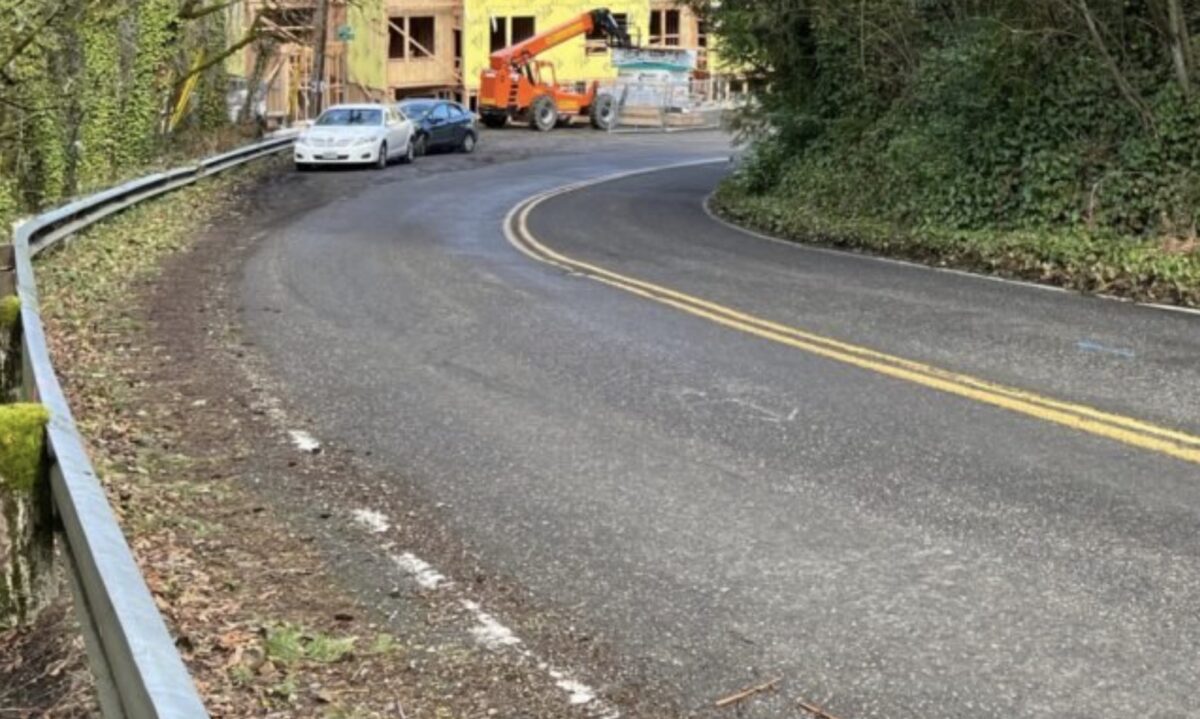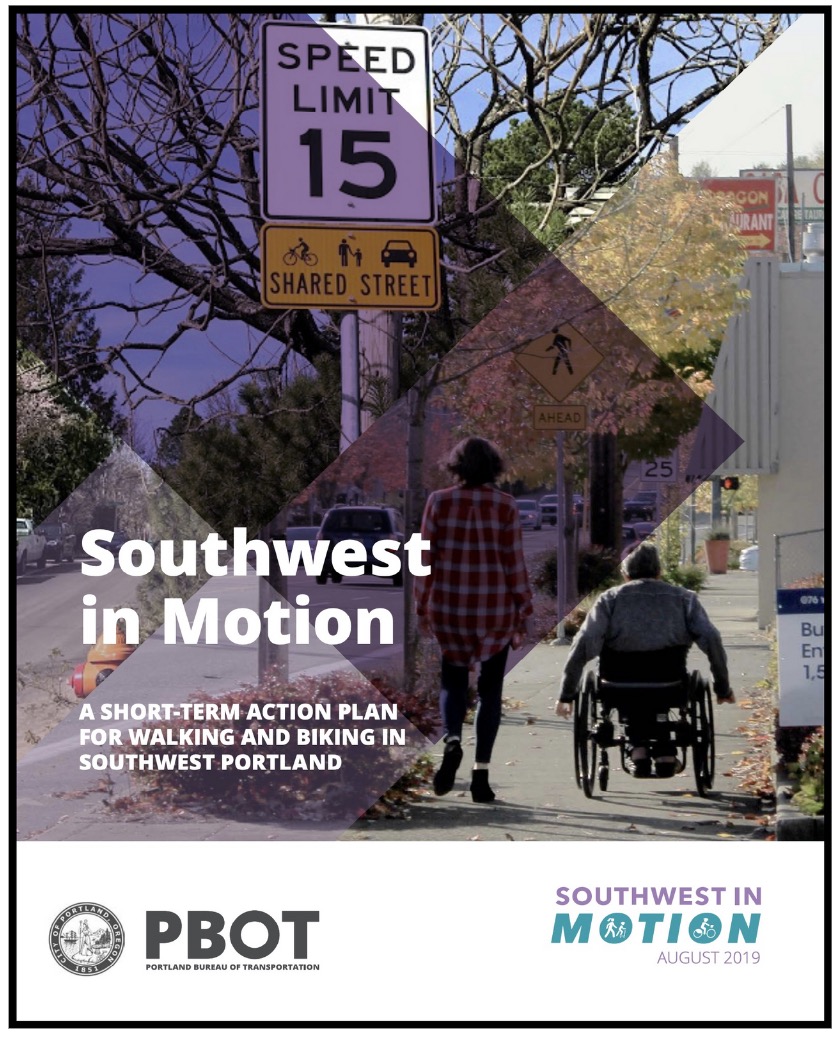
Implementation of the Southwest in Motion (SWIM) plan is flagging according to area transportation advocates. In a letter (PDF) sent yesterday to the Portland Bureau of Transportation (PBOT), former members of the SWIM Stakeholders Advisory Committee (SAC) laid out their concerns about the quality of the plan’s roll-out.
Co-signers include the current and past chair of PBOT’s Bicycle Advisory Committee (BAC).
The letter comes on the heels of PBOT Bicycle Coordinator Roger Geller’s recent update on bike network progress to the BAC. Geller presented a table which showed the southwest region of Portland lagging behind the rest of the city in the percentage of its planned bikeway network that has been built.
Correspondence between the advocates and PBOT began over a year ago, and yesterday’s letter is organized as a synopsis of those communications. It begins by recapping the group’s original concerns:

While it acknowledges that PBOT has “partially addressed” some of these issues, the letter makes the case that the bureau still has “a considerable way to go.”
- The lack of the 2-year progress report called for in the plan;
- Deficient and outdated information on the SWIM website;
- Slow progress made on project delivery relative to other In Motion plans; and
- Perhaps most important – having virtually no knowledge or involvement in project prioritization, selection, or design until they are announced.
Portland has adopted four “In Motion” plans over the past decade, beginning with East Portland in Motion (EPIM) in 2012, and followed by Central City (CCIM) in 2018, SWIM in December 2019, and Northwest (NWIM) in 2020. Most recently, North Portland in Motion got underway at the end of 2021.
A characteristic of all “In Motion” plans is that they are grounded in public participation. Project lists are the product of dialogue with advisory committees, and have been vetted through open houses, focus groups, meetings with stakeholders—the full Portland engagement process.
But there does not appear to be a uniform process for reporting out or overseeing project status — or budgeting — and this makes it difficult to account for progress, or commitment from the city. The advocates sum up this concern in their letter’s first of four action items:
Complete the progress report described in the SWIM plan including:
- Status report of projects completed.
- Projects for 2022-2023 that are budgeted/under construction, in design, and under consideration.
- An annually updated summary of the funds available for SWIM projects for the coming fiscal year including the anticipated funding sources.
- Summary of any anticipated issues regarding funding, staffing, etc. and how PBOT will try to resolve them.
Comment: The SWIM website was updated for the completed projects. It also lists projects that are called “active”, but this includes a wide range from, projects that are under construction to ones that appear to only be in the staff discussion stage. The listings offer minimal project descriptions and no information about the schedule, project manager contact information, estimated budget and funding source(s), or upcoming community involvement opportunities and summary of past public comments. It also does not list potential future projects under consideration or a funding outlook. What has been completed so far is a good start, but important information is lacking, and the public continues to remain mainly in the dark.
While recognizing that the areas of town with “In Motion” plans differ greatly, each with varying scope and needs, a cursory review of their websites shows that:
- Each plan follows a unique implementation approach (Central City in Motion has an ongoing Working Group which meets regularly to review project status and design);
- The city’s financial commitment to each differs by orders of magnitude (The EPIM 2021 10th Anniversary Status Report states that “PBOT and our agency partners now have allocated nearly $320 million to East Portland in Motion (EPIM) project implementation and related projects.” In contrast, a SWIM update notes that $500K will be available for “QuickBuild” projects which are expected to be constructed by 2024.
- Some plans offer more detailed timelines and implementation information. (NWIM describes an implementation strategy which includes project evaluations and ”tweaks and changes.”)
I reached out to Bicycle Advisory Committee Chair Ally Holmqvist, a co-signer of the letter, to learn why she and the BAC supported the SWIM requests. She brought up the BAC’s southwest ride last August,
I didn’t want to stand next to, let alone ride through, “the crossroads” and I felt uncomfortable using many of the bike lanes we rode on where the topography can provide challenge enough for riders. I was heartened to see the work done on SW Capitol Highway, but it is clear there is still more work to do and that all of those who devoted their time and effort to SWIM deserve an update on the next steps.
The letter is addressed to PBOT SWIM Project Manager Nick Falbo, and closes with a request for a closer partnership between PBOT and the community:
The plan states “Continued community advocacy for projects will be instrumental to the success of this plan.” This can only happen through a community – PBOT partnership. We invite you to have an open discussion with interested SW residents about how to best establish an on-going partnership that is effective and efficient for the city and SW residents.
Falbo responded briefly yesterday upon receiving the letter via email: “We appreciate the feedback and I will discuss with our capital delivery division in charge of project design and construction processes,” he wrote. “More to come.”



